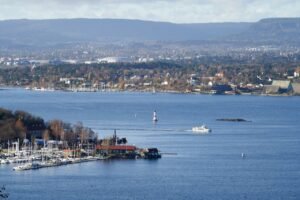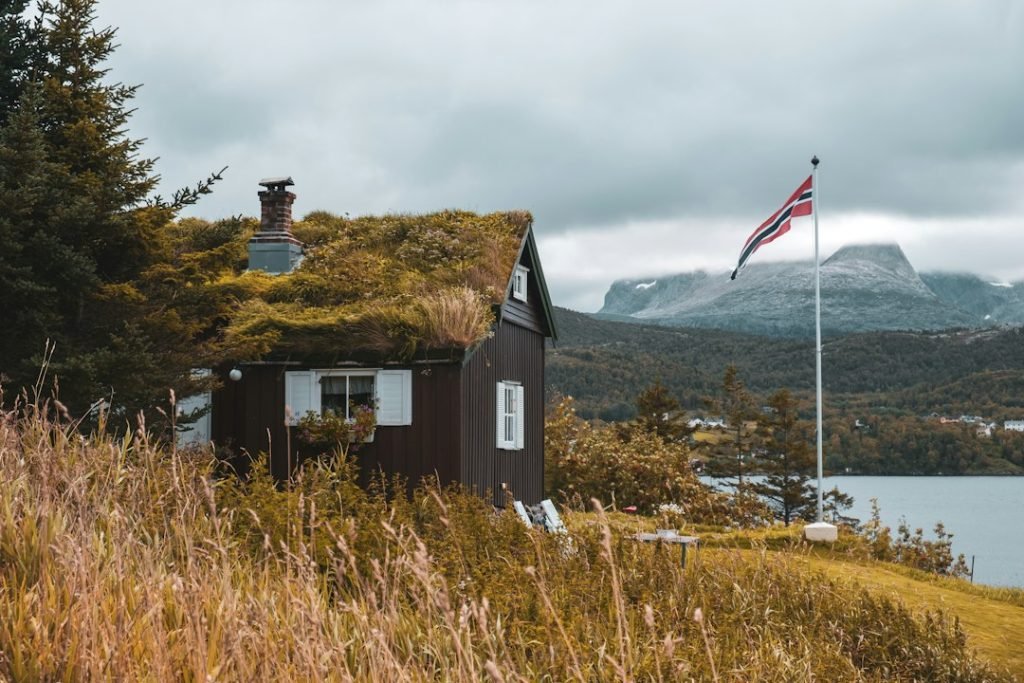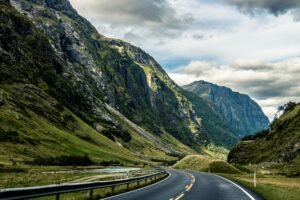

Essential Vocabulary for Discussing Norwegian History and Culture
Norway, known for its stunning natural landscapes and rich cultural heritage, has a fascinating history that dates back thousands of years. The country was inhabited by various indigenous groups, including the Sami people, before the arrival of the Vikings in the 8th century. The Vikings were seafaring warriors and traders who played a significant role in shaping Norway’s history.
Norwegian culture is deeply rooted in its Viking heritage, with a strong emphasis on exploration, adventure, and independence. The Norwegians are known for their love of nature and outdoor activities, such as hiking, skiing, and fishing. They also have a strong sense of community and egalitarian values.
Understanding Norwegian language and culture is essential for anyone looking to visit or live in Norway. While many Norwegians speak English fluently, knowing some basic Norwegian phrases can go a long way in building connections and showing respect for the local culture.
Table of Contents
ToggleBasic Vocabulary for Discussing Norwegian Geography
Norway is a country of stunning natural beauty, with fjords, mountains, and forests that attract visitors from around the world. Here are some key geographical terms and phrases to help you navigate Norway’s landscape:
– Fjord: A long, narrow inlet with steep sides or cliffs, created by glacial erosion.
– Mountain: A large landform that rises above its surroundings, typically with steep slopes and a peak.
– Forest: A large area covered with trees and undergrowth.
– Coast: The land along the edge of the sea or ocean.
– Lake: A large body of water surrounded by land.
– River: A natural flowing watercourse, usually freshwater, flowing towards an ocean, sea, lake or another river.
– City: An urban area with a high population density and infrastructure.
– Region: A specific area or part of a country.
– Landmark: A recognizable natural or artificial feature used for navigation or as a point of reference.
Some major cities in Norway include Oslo, Bergen, Trondheim, and Stavanger. Oslo is the capital and largest city, known for its vibrant cultural scene and modern architecture. Bergen is a UNESCO World Heritage site and famous for its colorful wooden houses and historic wharf. Trondheim is a historic city with a rich Viking heritage, while Stavanger is known for its oil industry and picturesque old town.
Vocabulary for Discussing Norwegian Traditions and Holidays
Norway has a rich cultural heritage, with many traditional holidays and celebrations throughout the year. Here are some major Norwegian holidays and vocabulary for discussing traditional customs and practices:
– Constitution Day (17th May): Norway’s National Day, celebrated with parades, flag-waving, and traditional costumes called bunads.
– Christmas (Jul): A festive holiday season celebrated with family gatherings, traditional food, and the lighting of advent candles.
– Easter (Påske): A religious holiday celebrated with family gatherings, egg painting, and the eating of chocolate eggs.
– Midsummer (Sankthansaften): A celebration of the summer solstice with bonfires, singing, and dancing.
– St. Lucia’s Day (Luciadagen): A celebration of light on December 13th, where girls dress in white robes and wear wreaths with candles on their heads.
Traditional Norwegian customs include:
– Bunad: Traditional Norwegian costumes worn on special occasions, often passed down through generations.
– Lutefisk: A traditional dish made from dried fish soaked in lye, served with potatoes and bacon.
– Folk dancing: Traditional Norwegian dances performed in traditional costumes to traditional music.
– Sami culture: The indigenous Sami people have their own distinct culture, language, and traditions.
Essential Vocabulary for Understanding Norwegian Cuisine
Norwegian cuisine is known for its simplicity and use of fresh, local ingredients. Here are some key food and drink terms and phrases to help you navigate Norwegian cuisine:
– Smørbrød: Open-faced sandwiches with various toppings, such as smoked salmon, shrimp, or cured meats.
– Fårikål: Norway’s national dish, made with lamb, cabbage, and whole black peppercorns.
– Lefse: A traditional Norwegian flatbread made from potatoes, flour, and butter.
– Rakfisk: Fermented fish, typically trout or char, served with flatbread and sour cream.
– Brunost: A brown cheese made from whey, with a sweet and caramel-like flavor.
– Aquavit: A traditional Norwegian spirit flavored with herbs and spices, often enjoyed during festive occasions.
– Krumkake: A thin, crispy waffle-like cookie rolled into a cone shape and filled with whipped cream or jam.
– Klippfisk: Dried and salted cod, a staple in Norwegian cuisine.
– Rømmegrøt: A traditional sour cream porridge served with butter and sugar.
Norwegian cuisine is heavily influenced by the country’s geography and climate. Seafood, such as salmon, cod, and shrimp, is a staple in Norwegian diets. The country’s long coastline provides an abundance of fresh fish. Dairy products, such as cheese and butter, are also popular in Norwegian cuisine.
Vocabulary for Discussing Norwegian Art and Literature
Norway has a rich artistic and literary tradition that spans centuries. Here are some key terms for discussing Norwegian art and literature:
– Edvard Munch: A famous Norwegian painter known for his iconic painting “The Scream.”
– Henrik Ibsen: A renowned Norwegian playwright and poet known for his plays such as “A Doll’s House” and “Hedda Gabler.”
– Knut Hamsun: A Nobel Prize-winning Norwegian author known for his novel “Hunger.”
– The Scream: A famous painting by Edvard Munch, depicting a figure screaming in anguish.
– Viking art: Artistic expressions of the Viking Age, including intricate metalwork, woodcarvings, and stone carvings.
– Sami art: Artistic expressions of the indigenous Sami people, often featuring traditional motifs and materials.
– National Romanticism: An artistic and cultural movement in Norway in the late 19th and early 20th centuries, characterized by a celebration of Norwegian nature and culture.
Norwegian literature is known for its exploration of themes such as nature, identity, and social issues. Many Norwegian authors have gained international recognition for their works, which often reflect the country’s unique cultural heritage and natural landscapes.
Key Terms for Discussing Norwegian Politics and Government

Norway is a constitutional monarchy with a parliamentary system of government. Here are some key terms for discussing Norwegian politics and government:
– Stortinget: The Norwegian Parliament, consisting of 169 members elected by the people.
– Monarch: The King or Queen of Norway, currently King Harald
– Prime Minister: The head of government in Norway, currently Erna Solberg.
– Political parties: Some major political parties in Norway include the Labour Party, Conservative Party, and Progress Party.
– Elections: Elections are held every four years to elect members of the Stortinget.
– Welfare state: Norway is known for its comprehensive welfare system, which provides social security and public services to its citizens.
Norway is often praised for its high standard of living, strong social welfare system, and commitment to environmental sustainability. The country has a strong tradition of democracy and political participation.
Vocabulary for Understanding Norwegian Religion and Beliefs
Norway has a diverse religious landscape, with Christianity being the dominant religion. Here are some key terms for discussing different religions and beliefs in Norway:
– Christianity: The largest religion in Norway, with the Evangelical Lutheran Church of Norway being the largest Christian denomination.
– Sami religion: The indigenous Sami people have their own traditional religious beliefs and practices.
– Atheism: The absence of belief in the existence of deities.
– Secularism: The separation of religion and state, with a focus on individual freedom of belief.
– Mosque: A place of worship for Muslims.
– Synagogue: A place of worship for Jews.
– Church: A place of worship for Christians.
Norway is known for its religious tolerance and respect for different beliefs. While Christianity is the dominant religion, there is also a growing Muslim population and a small Jewish community.
Vocabulary for Discussing Norwegian Sports and Recreation
Norwegians are known for their love of outdoor activities and sports. Here are some key terms for discussing popular Norwegian sports and recreational activities:
– Skiing: A popular winter sport in Norway, with both cross-country skiing and downhill skiing being popular.
– Hiking: Norway’s stunning landscapes make it a paradise for hikers, with many well-marked trails and national parks.
– Fishing: Norway’s long coastline and numerous lakes and rivers make it a great destination for fishing enthusiasts.
– Football: The most popular team sport in Norway, with many Norwegians following their local football teams.
– Handball: A popular indoor team sport in Norway, with both men’s and women’s teams achieving success at the international level.
– Sailing: With its long coastline and fjords, Norway offers excellent opportunities for sailing enthusiasts.
Norwegians take great pride in their outdoor lifestyle and are often seen participating in various sports and recreational activities. The country’s stunning natural landscapes provide the perfect backdrop for these activities.
Essential Vocabulary for Discussing Norwegian Education and Work
Norway has a well-developed education system and offers a range of educational opportunities. Here are some key terms for discussing different types of education and work opportunities in Norway:
– University: Higher education institutions that offer bachelor’s, master’s, and doctoral degrees.
– Vocational school: Institutions that provide practical training and education for specific trades or professions.
– Apprenticeship: A system of training where individuals learn a trade or profession through on-the-job training and classroom instruction.
– Work permit: A document that allows foreign nationals to work legally in Norway.
– Job market: The availability of jobs and employment opportunities in a particular area or industry.
– Labor unions: Organizations that represent the interests of workers and negotiate with employers on their behalf.
Norway is known for its high-quality education system, with many universities offering programs taught in English. The country also has a strong labor market, with a high standard of living and good working conditions.
Norwegian Language Classes: Choosing the Right Norwegian Language School
If you’re interested in learning Norwegian, there are many language schools and resources available to help you. Here are some tips for choosing the right Norwegian language school:
1. Accreditation: Look for language schools that are accredited by recognized organizations or have a good reputation.
2. Teaching methods: Consider the teaching methods used by the language school. Some schools may focus on immersion, while others may use a more structured approach.
3. Class size: Find out how many students are typically in each class. Smaller class sizes often allow for more individual attention and interaction with the teacher.
4. Course offerings: Check if the language school offers courses at different levels, from beginner to advanced. It’s also helpful if they offer specialized courses, such as business Norwegian or conversational Norwegian.
5. Location: Consider the location of the language school and whether it is convenient for you to attend classes.
In addition to language schools, there are also many online resources available for learning Norwegian. Websites, apps, and online courses can be a convenient and flexible way to learn the language at your own pace.
In conclusion, understanding Norwegian language and culture is essential for anyone looking to visit or live in Norway. Norway’s history, geography, traditions, cuisine, art, literature, politics, religion, sports, education, and work all contribute to its unique cultural identity. By familiarizing yourself with the vocabulary and concepts related to these aspects of Norwegian life, you can gain a deeper appreciation for the country and its people. Whether you’re planning a trip to Norway or considering a move there, taking the time to learn about Norwegian language and culture will enhance your experience and help you connect with the local community.
If you’re interested in learning more about Norwegian culture and history, you might also enjoy reading the article “The Subtleties of Faktisk, Egentlig, and Virkelig: Nuances in Norwegian Modal Adverbs.” This article explores the different meanings and usage of these adverbs, providing valuable insights into the Norwegian language. Check it out here!
FAQs
What is the article about?
The article is about essential vocabulary for discussing Norwegian history and culture.
Why is it important to learn about Norwegian history and culture?
Learning about Norwegian history and culture can help individuals understand the country’s traditions, values, and customs. It can also provide insight into the country’s political and social development.
What are some important historical events in Norway?
Some important historical events in Norway include the Viking Age, the Black Death, the Union with Denmark, the dissolution of the Union with Sweden, and World War II.
What are some important cultural traditions in Norway?
Some important cultural traditions in Norway include bunad (traditional clothing), Norwegian cuisine (such as lutefisk and lefse), and the celebration of holidays such as Christmas and Midsummer.
What is the significance of the Norwegian flag?
The Norwegian flag, also known as the “Nordic Cross,” represents Norway’s independence and sovereignty. It was adopted in 1821 and is a symbol of national pride.
Who are some famous Norwegian figures?
Some famous Norwegian figures include playwright Henrik Ibsen, painter Edvard Munch, explorer Roald Amundsen, and author Jo Nesbø.
What is the Sami culture?
The Sami culture is the indigenous culture of Norway, Sweden, Finland, and Russia. The Sami people have their own language, traditions, and customs, and have historically faced discrimination and marginalization.

Norwegian A1-A2
Course Overview The Norwegian A1-A2 course is an online program focused on teaching essential Norwegian grammar and vocabulary. It includes a variety of materials and topics, with opportunities to interact with a Norwegian teacher entirely online. Curriculum Highlights The course covers key areas such as grammar and vocabulary and topics such as family, daily life, education, work, traditions, and leisure activities. Who Should Enroll? This course is perfect for beginners or those at the A1 or A2 levels who want to improve their Norwegian skills. What You Get Access to the full Norwegian A1-A2 course. A monthly 1-hour online conversation with a teacher. Many written and oral assignments. Comprehensive information on Norwegian grammar, Norwegian vocabulary and how to use them, important sentence structures, etc. Tips on additional resources to further enhance your Norwegian learning.
0 students enrolled
Last updated Dec 10th, 2024
If you want to learn Norwegian, you can register for classes here. We look forward to hearing from you and helping you become fluent in Norwegian.





